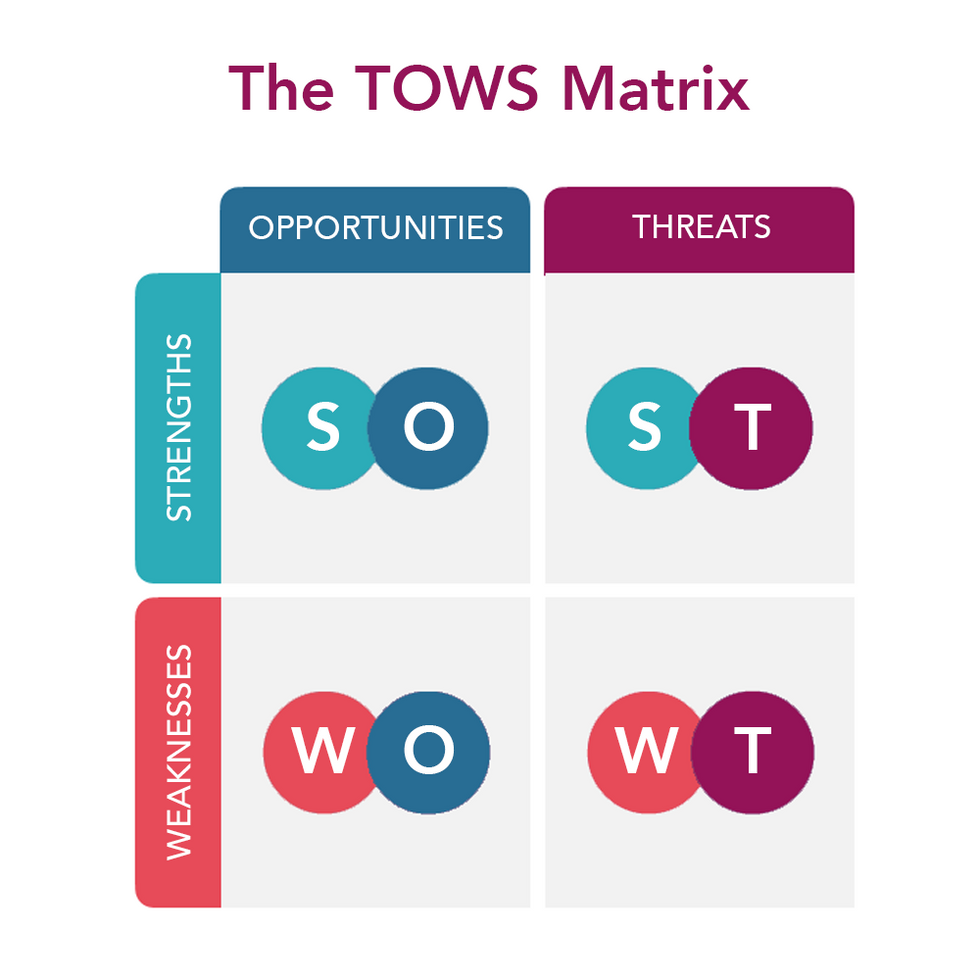
The Top 9 Ways To Ensure Your Employees Feel Appreciated
 Bigstock
{"adCodes": [{"desktop": "\u003cdiv class=\u0027rblad-wit_content\u0027\u003e\u003c/div\u003e", "display": true, "mobile": "\u003cdiv class=\u0027rblad-wit_content\u0027\u003e\u003c/div\u003e", "new_amp": "\u003camp-ad width=336 height=280\n type=\"doubleclick\"\n data-slot=\"/22278042776,22664312254/wit/wit_content\"\n data-multi-size=\"300x250\"\u003e\n\u003c/amp-ad\u003e", "order": 0, "tablet": "\u003cdiv class=\u0027rblad-wit_content\u0027\u003e\u003c/div\u003e"}, {"desktop": "\u003cdiv class=\u0027rblad-wit_content\u0027\u003e\u003c/div\u003e", "display": true, "mobile": "\u003cdiv class=\u0027rblad-wit_content\u0027\u003e\u003c/div\u003e", "new_amp": "\u003camp-ad width=336 height=280\n type=\"doubleclick\"\n data-slot=\"/22278042776,22664312254/wit/wit_content\"\n data-multi-size=\"300x250\"\u003e\n\u003c/amp-ad\u003e", "order": 1, "tablet": "\u003cdiv class=\u0027rblad-wit_content\u0027\u003e\u003c/div\u003e"}, {"desktop": "\u003cdiv class=\u0027rblad-wit_content\u0027\u003e\u003c/div\u003e", "display": true, "mobile": "\u003cdiv class=\u0027rblad-wit_content\u0027\u003e\u003c/div\u003e", "new_amp": "\u003camp-ad width=336 height=280\n type=\"doubleclick\"\n data-slot=\"/22278042776,22664312254/wit/wit_content\"\n data-multi-size=\"300x250\"\u003e\n\u003c/amp-ad\u003e", "order": 2, "tablet": "\u003cdiv class=\u0027rblad-wit_content\u0027\u003e\u003c/div\u003e"}], "adsOrder": [2]}
Bigstock
{"adCodes": [{"desktop": "\u003cdiv class=\u0027rblad-wit_content\u0027\u003e\u003c/div\u003e", "display": true, "mobile": "\u003cdiv class=\u0027rblad-wit_content\u0027\u003e\u003c/div\u003e", "new_amp": "\u003camp-ad width=336 height=280\n type=\"doubleclick\"\n data-slot=\"/22278042776,22664312254/wit/wit_content\"\n data-multi-size=\"300x250\"\u003e\n\u003c/amp-ad\u003e", "order": 0, "tablet": "\u003cdiv class=\u0027rblad-wit_content\u0027\u003e\u003c/div\u003e"}, {"desktop": "\u003cdiv class=\u0027rblad-wit_content\u0027\u003e\u003c/div\u003e", "display": true, "mobile": "\u003cdiv class=\u0027rblad-wit_content\u0027\u003e\u003c/div\u003e", "new_amp": "\u003camp-ad width=336 height=280\n type=\"doubleclick\"\n data-slot=\"/22278042776,22664312254/wit/wit_content\"\n data-multi-size=\"300x250\"\u003e\n\u003c/amp-ad\u003e", "order": 1, "tablet": "\u003cdiv class=\u0027rblad-wit_content\u0027\u003e\u003c/div\u003e"}, {"desktop": "\u003cdiv class=\u0027rblad-wit_content\u0027\u003e\u003c/div\u003e", "display": true, "mobile": "\u003cdiv class=\u0027rblad-wit_content\u0027\u003e\u003c/div\u003e", "new_amp": "\u003camp-ad width=336 height=280\n type=\"doubleclick\"\n data-slot=\"/22278042776,22664312254/wit/wit_content\"\n data-multi-size=\"300x250\"\u003e\n\u003c/amp-ad\u003e", "order": 2, "tablet": "\u003cdiv class=\u0027rblad-wit_content\u0027\u003e\u003c/div\u003e"}], "adsOrder": [2]}
To get started on the topic, we need to understand why feeling appreciated is so important for human beings. In neuroscience research, Hebb’s Law says that “neurons that fire together wire together.” The more you practice gratitude, the more you strengthen the brain’s neural circuits for gratitude, making it easier to focus on feelings of gratitude. When you start to focus on the things you already have in your life that are good, your brain becomes better at discovering similar things.
For example, if you consciously notice how engaged and curious your team members are behaving, you will be more likely to notice engagement and curiosity—feeling gratitude again. Even though the employees might always be there, the gratitude focus is like a signal to your brain to notice them.
To be crystal clear let’s start with some key definitions and implications.
We tend to use “appreciation” and “recognition” interchangeably, yet they are quite different in nature. When people managers and leaders want their teams and organizations to thrive and grow—and they want to create cultures of engagement, loyalty, and high performance—it’s important to understand the distinction. Recognition is about giving positive feedback based on results or performance against goals or objectives, yet sometimes recognition is given more informally: a verbal thanks, a handwritten note. All these methods can be meaningful, especially if they’re done in a timely and genuine way. They’re also motivating and exciting—everyone wants their good work to be applauded.
And while recognition that includes monetary compensation can be great, researchers from the London School of Economics (LSE) found that financial incentives can backfire when it comes to motivating employees. “These incentives may reduce an employee’s natural inclination to complete a task and derive pleasure from doing so” (LSE).
On the other hand, appreciation is about acknowledging a person’s inherent value. The point isn’t their accomplishments. It’s their worth as a colleague and human beings.
In simple terms, recognition is about what people do; appreciation is about who they are. Here are our top nine recommendations to ensure your employees feel appreciated.
1. Get To Know Them (More Than Just Their Name)
Bigstock
One of the simplest and most basic ways to show your employees that you appreciate them is by knowing and using their names. A person’s name is one of the most important things to them, and when you take the time to learn and use it, they feel appreciated. In addition to this, learn about their career aspirations, challenges, and professional stories, amongst others.
2. Listen To Them
Bigstock
You know that two-way communication is key in any relationship, so you make sure to actively listen to your employees as much as you expect them to. This shows that you value their opinions and are interested in hearing what they have to say. Plan periodic 1:1 conversations with all your direct reports, where you can deepen your understanding of both their work and their career aspirations.
3. Give Them Honest Feedback
Bigstock
Feedback is essential for growth, so make sure to give your employees honest feedback that they can use to improve their performance, productivity, and career. This shows that you are committed to helping them grow and develop in their roles.
4. Show Them Respect
Bigstock
One of the fundamentals of trust-building is respect, and it is a basic need for all human beings, so make sure to always show your employees, peers, colleagues, clients, etc. the respect they deserve. This sends the clear and consistent message that you value them as individuals and appreciate their contributions to the company and interest in it too.
5. Show Appreciation For Their Work
Bigstock
Everyone likes and needs to feel appreciated, therefore make sure to thank your employees for their hard work and let them know when they do a great job as well as for everything that they bring to the table. This helps them feel motivated and appreciated, which leads to higher job satisfaction and engagement.
6. Invest In Their Development
Bigstock
One of the most important investments that we can make as people leaders is investing in our employees' development; it is an investment in the future of your company, providing opportunities for them to learn and grow in their roles. This demonstrates that you are committed to their long-term success at the team, function, and company levels.
7. Recognize Their Achievements
Bigstock
Recognizing your employees’ achievements is a great way to show them that you appreciate their hard work. Whether it’s a formal recognition program or simply saying “good job” when you see them doing something well, letting them know that you notice and appreciate their efforts goes a long way.
8. Give Them Meaningful Work
Bigstock
Giving your employees interesting and meaningful work shows that you value their skills and abilities. It’s also a great way to keep them engaged in their work, which can lead to improved performance.

Bigstock
When you show concern for your employees’ well-being, it demonstrates that you care about them as people, not just as employees. This can include things like providing safe working conditions, flexibility, autonomy, offering mental health benefits, or giving them time off when they need it, amongst others.
From Your Site Articles- How Executives Can Boost Team Morale In The Workplace - Work It ... ›
- 3 Easy Ways To Compliment Your Co-Workers - Work It Daily ›
- How Executives Can Successfully Motivate Their Teams - Work It Daily ›
- 3 Ways To Show Appreciation For Your Employees - Work It Daily ›
- How to Show Employees You Appreciate Them - businessnewsdaily ... ›
- 15 Ways of How To Make Employees Feel Valued At Work | Indeed ... ›
- The Little Things That Make Employees Feel Appreciated ›
 Bigstock
{"adCodes": [{"desktop": "\u003cdiv class=\u0027rblad-wit_content\u0027\u003e\u003c/div\u003e", "display": true, "mobile": "\u003cdiv class=\u0027rblad-wit_content\u0027\u003e\u003c/div\u003e", "new_amp": "\u003camp-ad width=336 height=280\n type=\"doubleclick\"\n data-slot=\"/22278042776,22664312254/wit/wit_content\"\n data-multi-size=\"300x250\"\u003e\n\u003c/amp-ad\u003e", "order": 0, "tablet": "\u003cdiv class=\u0027rblad-wit_content\u0027\u003e\u003c/div\u003e"}, {"desktop": "\u003cdiv class=\u0027rblad-wit_content\u0027\u003e\u003c/div\u003e", "display": true, "mobile": "\u003cdiv class=\u0027rblad-wit_content\u0027\u003e\u003c/div\u003e", "new_amp": "\u003camp-ad width=336 height=280\n type=\"doubleclick\"\n data-slot=\"/22278042776,22664312254/wit/wit_content\"\n data-multi-size=\"300x250\"\u003e\n\u003c/amp-ad\u003e", "order": 1, "tablet": "\u003cdiv class=\u0027rblad-wit_content\u0027\u003e\u003c/div\u003e"}, {"desktop": "\u003cdiv class=\u0027rblad-wit_content\u0027\u003e\u003c/div\u003e", "display": true, "mobile": "\u003cdiv class=\u0027rblad-wit_content\u0027\u003e\u003c/div\u003e", "new_amp": "\u003camp-ad width=336 height=280\n type=\"doubleclick\"\n data-slot=\"/22278042776,22664312254/wit/wit_content\"\n data-multi-size=\"300x250\"\u003e\n\u003c/amp-ad\u003e", "order": 2, "tablet": "\u003cdiv class=\u0027rblad-wit_content\u0027\u003e\u003c/div\u003e"}], "adsOrder": [2]}
Bigstock
{"adCodes": [{"desktop": "\u003cdiv class=\u0027rblad-wit_content\u0027\u003e\u003c/div\u003e", "display": true, "mobile": "\u003cdiv class=\u0027rblad-wit_content\u0027\u003e\u003c/div\u003e", "new_amp": "\u003camp-ad width=336 height=280\n type=\"doubleclick\"\n data-slot=\"/22278042776,22664312254/wit/wit_content\"\n data-multi-size=\"300x250\"\u003e\n\u003c/amp-ad\u003e", "order": 0, "tablet": "\u003cdiv class=\u0027rblad-wit_content\u0027\u003e\u003c/div\u003e"}, {"desktop": "\u003cdiv class=\u0027rblad-wit_content\u0027\u003e\u003c/div\u003e", "display": true, "mobile": "\u003cdiv class=\u0027rblad-wit_content\u0027\u003e\u003c/div\u003e", "new_amp": "\u003camp-ad width=336 height=280\n type=\"doubleclick\"\n data-slot=\"/22278042776,22664312254/wit/wit_content\"\n data-multi-size=\"300x250\"\u003e\n\u003c/amp-ad\u003e", "order": 1, "tablet": "\u003cdiv class=\u0027rblad-wit_content\u0027\u003e\u003c/div\u003e"}, {"desktop": "\u003cdiv class=\u0027rblad-wit_content\u0027\u003e\u003c/div\u003e", "display": true, "mobile": "\u003cdiv class=\u0027rblad-wit_content\u0027\u003e\u003c/div\u003e", "new_amp": "\u003camp-ad width=336 height=280\n type=\"doubleclick\"\n data-slot=\"/22278042776,22664312254/wit/wit_content\"\n data-multi-size=\"300x250\"\u003e\n\u003c/amp-ad\u003e", "order": 2, "tablet": "\u003cdiv class=\u0027rblad-wit_content\u0027\u003e\u003c/div\u003e"}], "adsOrder": [2]}
So your looking for a job need to explain to a recruiter why you've been job-hopping. How can you effectively explain your job-hopping habit without disqualifying yourself as a job candidate?
The Best Way To Explain Job-Hopping To A [email protected] How to explain job hopping to a recruiter. #recruiter#interviewtips#interview#jobinterview#jobinterviewtips#jobinterviewquestions#jobsearchhelp#jobsearchtips#jobsearch#careeradvice#careertok#edutok#careertiktok#careertips♬ original sound - J.T. O'DonnellWell, first, you need to understand job-hopping from the recruiter's point of view. To a recruiter, job-hopping is a red flag. They're worried that, if they do hire you for a position, you're going to ditch the company six months later because that's a pattern in your work history.
In order to effectively explain job-hopping to a recruiter, you need to revise your work history by filling in the gaps.
For each job, a recruiter wants to know:
- What did you learn?
- What did you experience?
- How did you grow your skills?
- What made you leave your job and move to the next one? (What opportunity was at that next job? What was the next thing that you were going to learn there?)
Walk the recruiter through your job-hopping history by talking about what you learned and how you learned even more at the next job. When you get to the current situation, you then look at them and say, "For those reasons, I'm now very clear in the value that I can bring and what I want in a job. And I am looking to stay put. And so while I know it looks like I've been job-hopping, I believe that that journey brought me to this moment where I have all the experience that I need to stay here and do a really good job for you."
That's what recruiters need to hear. If you follow this strategy, your job-hopping habit won't prevent you from landing your next job.
Navigating job search challenges like this one can be incredibly difficult, especially if you're not sure what value you bring to the table as a professional. The good news is, I can help.
I'd love it if you joined my FREE community where professionals like you are learning how to become empowered in their careers so they can finally find career happiness and satisfaction, and overcome job burnout once and for all!
Sign up for my FREE community and become a Workplace Renegade today! My team and I are looking forward to working with you soon.
Read moreShow lesshow to explain job hopping {"customDimensions": {"1":"J.T. O'Donnell","2":"popular","3":"how to explain job hopping, recruiters, recruiting, job-hopper, job-hopping, recruiter, hiring manager, how to explain job hopping to a recruiter, job search, job seekers, job search tips, job search advice, career, career tips, career advice, ~rmsc:rebelmouse-image:29971449","4":"06/13/2022"}, "post": {"split_testing": {}, "providerId": 0, "sections": [0, 370480899, 376489574, 404327439, 543270555, 479660731, 473333499], "buckets": [], "authors": [19549412]} } Community 3 Common Mistakes You're Making When Creating A SWOT Analysis Andrea MarkowskiJune 13, 2022 Bigstock
{"adCodes": [{"desktop": "\u003cdiv class=\u0027rblad-wit_content\u0027\u003e\u003c/div\u003e", "display": true, "mobile": "\u003cdiv class=\u0027rblad-wit_content\u0027\u003e\u003c/div\u003e", "new_amp": "\u003camp-ad width=336 height=280\n type=\"doubleclick\"\n data-slot=\"/22278042776,22664312254/wit/wit_content\"\n data-multi-size=\"300x250\"\u003e\n\u003c/amp-ad\u003e", "order": 0, "tablet": "\u003cdiv class=\u0027rblad-wit_content\u0027\u003e\u003c/div\u003e"}, {"desktop": "\u003cdiv class=\u0027rblad-wit_content\u0027\u003e\u003c/div\u003e", "display": true, "mobile": "\u003cdiv class=\u0027rblad-wit_content\u0027\u003e\u003c/div\u003e", "new_amp": "\u003camp-ad width=336 height=280\n type=\"doubleclick\"\n data-slot=\"/22278042776,22664312254/wit/wit_content\"\n data-multi-size=\"300x250\"\u003e\n\u003c/amp-ad\u003e", "order": 1, "tablet": "\u003cdiv class=\u0027rblad-wit_content\u0027\u003e\u003c/div\u003e"}, {"desktop": "\u003cdiv class=\u0027rblad-wit_content\u0027\u003e\u003c/div\u003e", "display": true, "mobile": "\u003cdiv class=\u0027rblad-wit_content\u0027\u003e\u003c/div\u003e", "new_amp": "\u003camp-ad width=336 height=280\n type=\"doubleclick\"\n data-slot=\"/22278042776,22664312254/wit/wit_content\"\n data-multi-size=\"300x250\"\u003e\n\u003c/amp-ad\u003e", "order": 2, "tablet": "\u003cdiv class=\u0027rblad-wit_content\u0027\u003e\u003c/div\u003e"}], "adsOrder": [2]}
Bigstock
{"adCodes": [{"desktop": "\u003cdiv class=\u0027rblad-wit_content\u0027\u003e\u003c/div\u003e", "display": true, "mobile": "\u003cdiv class=\u0027rblad-wit_content\u0027\u003e\u003c/div\u003e", "new_amp": "\u003camp-ad width=336 height=280\n type=\"doubleclick\"\n data-slot=\"/22278042776,22664312254/wit/wit_content\"\n data-multi-size=\"300x250\"\u003e\n\u003c/amp-ad\u003e", "order": 0, "tablet": "\u003cdiv class=\u0027rblad-wit_content\u0027\u003e\u003c/div\u003e"}, {"desktop": "\u003cdiv class=\u0027rblad-wit_content\u0027\u003e\u003c/div\u003e", "display": true, "mobile": "\u003cdiv class=\u0027rblad-wit_content\u0027\u003e\u003c/div\u003e", "new_amp": "\u003camp-ad width=336 height=280\n type=\"doubleclick\"\n data-slot=\"/22278042776,22664312254/wit/wit_content\"\n data-multi-size=\"300x250\"\u003e\n\u003c/amp-ad\u003e", "order": 1, "tablet": "\u003cdiv class=\u0027rblad-wit_content\u0027\u003e\u003c/div\u003e"}, {"desktop": "\u003cdiv class=\u0027rblad-wit_content\u0027\u003e\u003c/div\u003e", "display": true, "mobile": "\u003cdiv class=\u0027rblad-wit_content\u0027\u003e\u003c/div\u003e", "new_amp": "\u003camp-ad width=336 height=280\n type=\"doubleclick\"\n data-slot=\"/22278042776,22664312254/wit/wit_content\"\n data-multi-size=\"300x250\"\u003e\n\u003c/amp-ad\u003e", "order": 2, "tablet": "\u003cdiv class=\u0027rblad-wit_content\u0027\u003e\u003c/div\u003e"}], "adsOrder": [2]}
What if I were to tell you that you might be doing the good old SWOT analysis incorrectly?
And on top of that, you're only doing half of it?
SWOT: Strengths, Weaknesses, Opportunities, and Threats—a classic framework familiar to many in the business world. It’s often used as a situational analysis for an organization’s strategic planning.
The SWOT is so common that its usage, in some cases, has morphed from its original form. This results in an analysis that is only partially complete. And rarely helpful.
It also has a whole other half—the TOWS analysis—which is where your SWOT goes from “I made a list” to a practical, actionable strategy.
Here are the most common steps that we get wrong when completing a SWOT.
“I Just List My Company’s Strengths, Weaknesses, Opportunities, And Threats, Right?”Well…kind of.
Many people get the Strengths and Weaknesses correct. Indeed, you simply list out your company’s areas of mastery and shortcomings.
However, the Opportunities and Threats sections are where most people make their first SWOT mistake.
The O and T are NOT specifically about your company.
O and T are to be lists of EXTERNAL factors that could affect your business. In other words, things that in most cases are beyond your direct control.
Here’s a simple example. Let's say you are running a food cart that sells pie… because...pie! As I'm a native Midwesterner, it has to be pie-on-a-stick.
(Don't question me here. All Midwesterners know that anything can be eaten on a stick!)
Strengths – The things your company excels at. These are internal factors.
S could include having a recognizable brand, great employee perks (free pie!), being debt-free, and offering a customer rewards program.
Weaknesses – Things that prevent the company from reaching its optimum performance. These are internal factors.
For instance, not offering gluten-free or vegan options, you only have one cart location, and an unwillingness to invest in payment technology, so you only accept cash.
Opportunities – These are external factors that can help give your business an advantage.
For instance, your pie-on-a-stick food cart enjoys local tourism traffic, the permit fees are low, and food suppliers are dependable.
Threats – These are external factors that can negatively impact your business.
For example, there is a shortage of workers in your town, your region has bad weather for half the year which drives away foot traffic, and the stick manufacturer is raising prices.
Remember, O and T are external forces only. Many people tend to make O and T internal factors. And, well…it’s tough to do a situational analysis when you’re not fully examining the situation from all angles.
A SWOT Is Not An Island.
Bigstock
That is to say, never do your SWOT in isolation. I’ve found that a SWOT analysis is typically done by one person or one department, with no additional research or data collected.
To get a truly holistic view of your company, you need to talk to other people (and not just the managers). You need to hear diverse voices from all departments and job levels for a truly representative set of data.
You may think you know your business’s strengths and weaknesses, but if you do not listen to a representative group of people from across the entire organization, you're not getting the full picture.
For external forces, monitor the environment for things that could potentially affect your business. A good framework for this is a semi-localized version of a PESTLE analysis, if you want to go deep.
Now, let's go back to our pie-on-a-stick food cart example.
Example of a Weakness that comes to light after talking with an employee:
You hear from one of your high school workers that none of their teen friends will eat at the cart because your business doesn't accept mobile payments. That could be cutting out a large chunk of potential customers, as the high school is located just around the corner.
Example of an Opportunity you could take advantage of, found from keeping tabs on the local business environment:
You learn from a local media outlet that there is a new off-site kitchen space opening up, which would be perfect for expanding your food prep capabilities, if you’re considering opening a second location but need more prep and storage space.
TOWS Is Just SWOT Spelled Backwards, But It Unlocks The True Power Of This Tool.
Did you know that there is an entire step two to the SWOT? It's called the TOWS analysis. And yes, that is SWOT spelled backwards!
In a TOWS analysis, we look at the relationship between the internal and the external factors and what actions your business needs to take to improve your current positioning.
To do this, we use a matrix that, believe it or not, is called the TOWS Matrix.
Put your company’s Strengths and Weaknesses on the Y-axis and the external Opportunities and Threats on the X-axis. Then combine your S and W with the O and T, making actionable strategies for each quadrant.
In the SO quadrant, ask: “How can we utilize our strengths to take advantage of the current opportunities?"
For example: The pie-on-a-stick business is a well-known local brand, allowing you to take advantage of cross-promotional opportunities with nearby retail businesses, who you learn are looking to partner with popular local food brands.
In the ST quadrant, ask: "How can we utilize our strengths to overcome any potential threats in the current environment—and potentially turn them into opportunities?"
For example: Your established customer rewards program might help to weather planned road construction near your location that could cut into new customer foot traffic. You might encourage your biggest fans to stop by more often and receive double rewards during this period to help make up for lost new customer sales.
In the WO quadrant, ask: “How can the current opportunities help to mitigate our weaknesses?"
For example: You discover an opportunity to set up an indoor food stall across town that would not only add a second location (a weakness) but also be more immune to bad weather that affects your outdoor cart location (a threat).
This is an instance of a Weakness-Opportunity-AND-Threat strategy combo!
The WT quadrant is the danger zone! This is an area you need to watch out for. It's wise to create some offensive strategies to help manage risks if your weaknesses might magnify current threats.
For example: Your cash-only payment system could backfire as society moves more and more towards mobile and touchless payments as the norm. You might consider investing in new technology so you’re not left in the dust.
I’ve found that the TOWS analysis will dramatically improve your SWOT. Instead of merely listing things out in a SWOT and calling it a day, the TOWS adds actionable strategies and tactics based on research and data from the internal and external environments. Good luck!
Read moreShow less {"customDimensions": {"1":"Executive Community, Andrea Markowski","2":"community","3":"swot and tows analysis, swot analysis, swot, tows analysis, tows, strengths, weaknesses, opportunities, threats, business, ~rmsc:rebelmouse-image:29963959, ~rmsc:rebelmouse-image:29960057, ~rmsc:rebelmouse-image:29963936, ~rmsc:rebelmouse-image:29960050","4":"06/13/2022"}, "post": {"split_testing": {}, "providerId": 0, "sections": [0, 544324100, 544398583, 473333499, 479660731], "buckets": [], "authors": [21030904, 25275496]} } Featured How To Explain Job-Hopping To A Recruiter
{"customDimensions": {"1":"J.T. O'Donnell","2":"popular","3":"how to explain job hopping, recruiters, recruiting, job-hopper, job-hopping, recruiter, hiring manager, how to explain job hopping to a recruiter, job search, job seekers, job search tips, job search advice, career, career tips, career advice, ~rmsc:rebelmouse-image:29971449","4":"06/13/2022"}, "post": {"split_testing": {}, "providerId": 0, "sections": [0, 370480899, 376489574, 404327439, 543270555, 479660731, 473333499], "buckets": [], "authors": [19549412]} }
How To Explain Job-Hopping To A Recruiter
{"customDimensions": {"1":"J.T. O'Donnell","2":"popular","3":"how to explain job hopping, recruiters, recruiting, job-hopper, job-hopping, recruiter, hiring manager, how to explain job hopping to a recruiter, job search, job seekers, job search tips, job search advice, career, career tips, career advice, ~rmsc:rebelmouse-image:29971449","4":"06/13/2022"}, "post": {"split_testing": {}, "providerId": 0, "sections": [0, 370480899, 376489574, 404327439, 543270555, 479660731, 473333499], "buckets": [], "authors": [19549412]} }
 Now Hiring: Remote SysOps Engineer
{"customDimensions": {"1":"Work It Daily, Kinsta \u00ae","2":"popular","3":"kinsta, hiring, remote jobs, remote work, remote workforce, remote companies hiring, remote companies 2021, sysops engineer, sysops engineer jobs, ~popular_source-pageview, ~rmsc:rebelmouse-image:26404410, ~rmsc:rebelmouse-image:26409812","4":"05/18/2021"}, "post": {"split_testing": {}, "providerId": 0, "sections": [370480899, 545998439, 545998440, 473310812, 376489962, 526353713, 545658354, 548352055, 548352058, 543270555, 473333499, 473310813], "buckets": [], "authors": [19548593, 21891195]} }
Now Hiring: Remote SysOps Engineer
{"customDimensions": {"1":"Work It Daily, Kinsta \u00ae","2":"popular","3":"kinsta, hiring, remote jobs, remote work, remote workforce, remote companies hiring, remote companies 2021, sysops engineer, sysops engineer jobs, ~popular_source-pageview, ~rmsc:rebelmouse-image:26404410, ~rmsc:rebelmouse-image:26409812","4":"05/18/2021"}, "post": {"split_testing": {}, "providerId": 0, "sections": [370480899, 545998439, 545998440, 473310812, 376489962, 526353713, 545658354, 548352055, 548352058, 543270555, 473333499, 473310813], "buckets": [], "authors": [19548593, 21891195]} }
 3 Important Career Lessons Learned On And Off The Field
{"customDimensions": {"1":"Executive Community, J.T. O'Donnell","2":"popular","3":"career change, entrepreneur, entrepreneurship, career, career challenges, overcoming career challenges, personal branding, personal development, professional development, professional growth, success, career success, pro athletes, tom brady, chris gronkowski, nfl, tiktok, social media strategy, social media, career growth, ~rmsc:rebelmouse-image:25632872, ~rmsc:rebelmouse-image:25633076, ~rmsc:rebelmouse-image:25632876, ~rmsc:rebelmouse-image:25632899","4":"02/10/2021"}, "post": {"split_testing": {}, "providerId": 0, "sections": [0, 370480899, 473333499, 376489962, 526353713, 376489624, 479660731], "buckets": [], "authors": [21030904, 19549412]} }
3 Important Career Lessons Learned On And Off The Field
{"customDimensions": {"1":"Executive Community, J.T. O'Donnell","2":"popular","3":"career change, entrepreneur, entrepreneurship, career, career challenges, overcoming career challenges, personal branding, personal development, professional development, professional growth, success, career success, pro athletes, tom brady, chris gronkowski, nfl, tiktok, social media strategy, social media, career growth, ~rmsc:rebelmouse-image:25632872, ~rmsc:rebelmouse-image:25633076, ~rmsc:rebelmouse-image:25632876, ~rmsc:rebelmouse-image:25632899","4":"02/10/2021"}, "post": {"split_testing": {}, "providerId": 0, "sections": [0, 370480899, 473333499, 376489962, 526353713, 376489624, 479660731], "buckets": [], "authors": [21030904, 19549412]} }
 How Ex-NFL Player, Chris Gronkowski, Is Using Social Media To Change Careers
{"customDimensions": {"1":"Executive Community, J.T. O'Donnell","2":"popular","3":"2010, Barstool, camera phone, career growth and development, career growth opportunities, chrisgronkowski, cowboys, dallascowboys, dinner, football, free, gronkspike, iceshaker, investor, nfl, nflfootball, nflplayer, nflplayers, nflworkout, payday, rookie, salary, sharing, sharktank, tic toc, tic tok, tick tock, ticktock, tictok, tik tok, tiktok, tiktok.com, trade, trainingcamp, upload, video, video phone, weighin, youtube.com, ~popular_source-pageview, \u0442\u0438\u043a \u0442\u043e\u043a, \u30c6\u30a3\u30c3\u30af\u30c8\u30c3\u30af, chris gronkowski, ~rmsc:rebelmouse-image:25551501, ~rmsc:rebelmouse-image:25551637, ~rmsc:rebelmouse-image:25551540, ~rmsc:rebelmouse-image:25598481","4":"01/29/2021"}, "post": {"split_testing": {}, "providerId": 0, "sections": [0, 370480899, 473333499, 526353713, 376489624, 479660731], "buckets": [], "authors": [21030904, 19549412]} }
How Ex-NFL Player, Chris Gronkowski, Is Using Social Media To Change Careers
{"customDimensions": {"1":"Executive Community, J.T. O'Donnell","2":"popular","3":"2010, Barstool, camera phone, career growth and development, career growth opportunities, chrisgronkowski, cowboys, dallascowboys, dinner, football, free, gronkspike, iceshaker, investor, nfl, nflfootball, nflplayer, nflplayers, nflworkout, payday, rookie, salary, sharing, sharktank, tic toc, tic tok, tick tock, ticktock, tictok, tik tok, tiktok, tiktok.com, trade, trainingcamp, upload, video, video phone, weighin, youtube.com, ~popular_source-pageview, \u0442\u0438\u043a \u0442\u043e\u043a, \u30c6\u30a3\u30c3\u30af\u30c8\u30c3\u30af, chris gronkowski, ~rmsc:rebelmouse-image:25551501, ~rmsc:rebelmouse-image:25551637, ~rmsc:rebelmouse-image:25551540, ~rmsc:rebelmouse-image:25598481","4":"01/29/2021"}, "post": {"split_testing": {}, "providerId": 0, "sections": [0, 370480899, 473333499, 526353713, 376489624, 479660731], "buckets": [], "authors": [21030904, 19549412]} }
PropertySea is the ultimate platform for all your real estate needs. Whether you're searching for your dream home, looking to sell or rent your property, or seeking investment opportunities, PropertySea is your one-stop destination.
Whether you're a homebuyer, seller, renter, or investor, PropertySea is your trusted partner in the real estate market. Discover a world of possibilities, connect with expert agents, and make your property dreams a reality. Start your real estate journey with PropertySea today and experience the convenience, efficiency, and reliability of our comprehensive platform.
Originally posted on: https://www.workitdaily.com/make-your-employees-feel-appreciated
